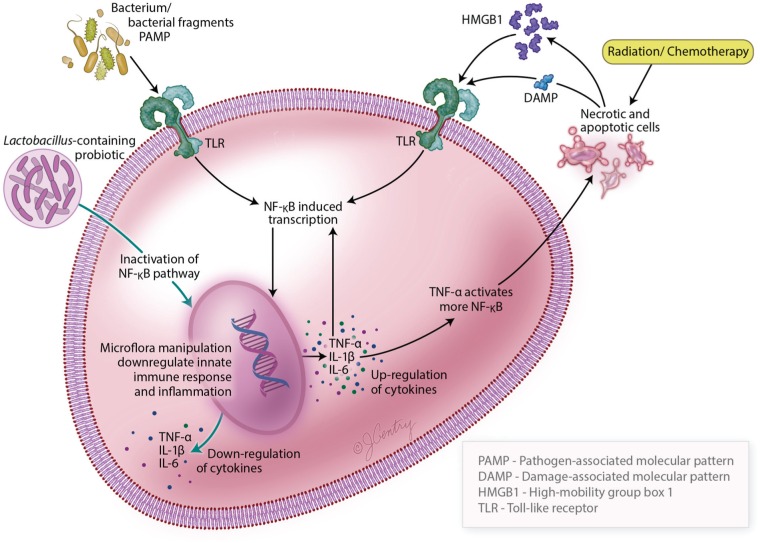Figure 3.
This figure describes the molecular pathways involved in microbiota-host interactions and the development of oral mucositis. The detection of microbial components (PAMPs) and endogenous damage-associated molecular patterns (DAMPs and HMGB1) by pattern recognition receptors such as Toll-like receptors triggers a cascade of cellular signals, resulting in activation of NF-κB (among other pathways) that contribute to amplify proinflammatory cytokines and apoptosis. The use of probiotic bacteria has the ability to activate pathways that are involved in the reduction of inflammatory signaling and apoptosis through the downregulation of the innate immune response of the epithelial cells by way of inactivation of the NF-κB pathway. DAMP, damage-associated molecular pattern; HMGB1, high-mobility group box-1; IL, interleukin; NF-κB, nuclear factor-κB; PAMP, pathogen-associated molecular pattern; TNF, tumor necrosis factor.

